While in France my cousin and I visited several stores, a factory and a museum that all specialized in Provençal fabrics. The gorgeous fabric was originally made in India and the process was brought to France through the port of Marseille in the mid 17th century. The Indiennes stylized fabric, which is often referred to in England and America as chintz, featured bright and cheerful flora and fauna. As it was affordable and easy to care for it became an instant hit. Beautiful French Fabric A Bit of History and a Museum Tour.
“The Couturier’s workshop, Arles”~ Antoine Raspal, 1760
Beautiful French Fabric A Bit of History and a Museum Tour
The French locals soon started producing their own version of the cloth. A playing card manufacturer, Benoît Ganteaume, and wood engraver, Jacques Baville, were the first to apply their card printing techniques to cloth. Once the design was applied, layers of color were added. But the dyes used were inferior to those in India.
“Brothers Wetter Textile Factory at Orange” ~ Joseph-Maria Gabriel Rossetti, 1764/65
In order to take a controlling role King Louis XIV had his Minister of Finance, Jean-Baptiste Colbert, create the Compagnie des Indes (East India Company) in 1664. Armenian fabric weavers and dyers were brought to Marseille to share their skills with local producers.
No surprise, the Indiennes fabric became all the rage at the French court. As the cost to produce the fabric was far less expensive than silk and wool French factories in Lyon were forced to close. The manufacturers successfully lobbied the government to have the import and production of the Indiennes fabric banned in 1686. The Indiennes manufacturers avoided the ban by moving to the Avignon region which at the time belonged to the Vatican and was under Papal jurisdiction.
Madame de Pompadour wearing an Indienne robe “Madame de Pompadour at her Tambour Frame” ~ François-Hubert Drouais, 1763/64
The ban lasted 73 years. It was lifted in 1759 and Indiennes fabric once again became extremely popular. It was used in Provence for tablecloths, bedspreads, and items of clothing. Men wore shirts, neckerchiefs, and waistcoats while women wore skirts, scarves, and aprons, sometimes several designs all at once.
Indiennes Fabric
Original Indiennes fabric had Arabic and Mughal art inspired flora and fauna.
After the ban was lifted one producer of cloth, Christophe-Philippe Oberkampf, set up a factory in Jouy-en-Josas. It was located near a river just up from the court of Versailles. The company focused on producing floral designs originally made in India. It grew into a large and successful factory. The fabric of the region became known as Toile de Jouy, often shortened to Toile.
It is easy to see the Provençal influence on the Indiennes fabric in the form of sunflowers, lavender, fruit, and olive themes.
It generally is produced in sunny shades of yellow, red and blue.
These fabric images were taken at the Les Olivades factory.
Les Olivades
Les Olivades was begun by Léonard Quinche in 1818. His factory was located in the small Provençal village of Saint-Étienne-du-Grès (which you may recall is the same small village where we stayed at Mas Predon). In 1948 the company was sold to Pierre and Paule Boudin. Their son, Jean-François Boudin is the current director of the company and several other family members are also involved. We happened to meet Monsieur Boudin while visiting the Paris store.
Can you tell it was very hot and humid that day?
My cousin is a fabric artist who creates beautiful quilts and she purchased some fabric from the Paris store and we discussed with Monsieur Boudin that we also would be traveling to Provence and staying in the same small village as his family’s factory. There is a shop there as well that is open to the public but factory tours must be made in advance and generally with a group of 10 or more. We were VERY lucky to be given the opportunity to see how such lovely fabric is created.
There is a short video of the creation process of the fabrics in the factory you can see HERE.
Souleiado
In the village of Tarascon in Provence, there is a wonderful museum of the history of French Indiennes fabric at Souleiado, another producer of cloth.
It’s a bit of a hunt through several small, winding streets to find Souleiado but well worth your time.
You know you are headed in the right direction when you pass under the arch with the gold Virgin.
Then past the town theater.
We finally just parked and walked the rest of the way. But you could go right up to the door if you had one of these:
The museum itself does not allow photographs due to the delicate age and nature of the fabrics in their collection. It is housed in a charming old building.
There was great detail on how scarves were folded and pinned in place and the lovely quilting on the skirts and petticoats.
Les Olivades
1 Rue de Tournon ,75006 Paris, France
Chemin des Indienneurs,13103 Saint Etienne du Grès, France
Souleiado Museum
39, rue Charles Demery, 13150 Tarascon, France

What color and pattern would you choose?
Laura
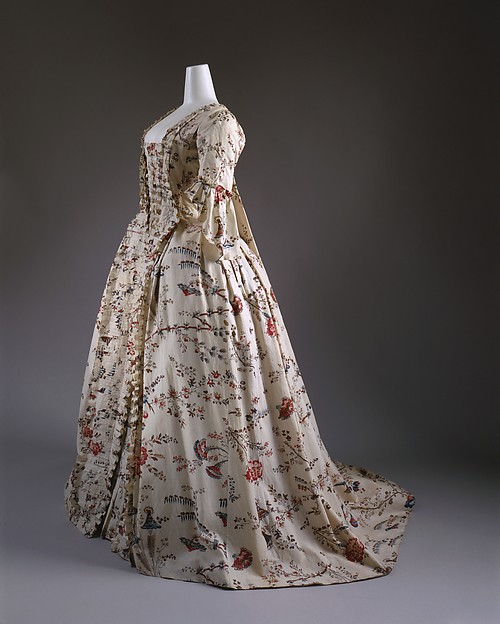

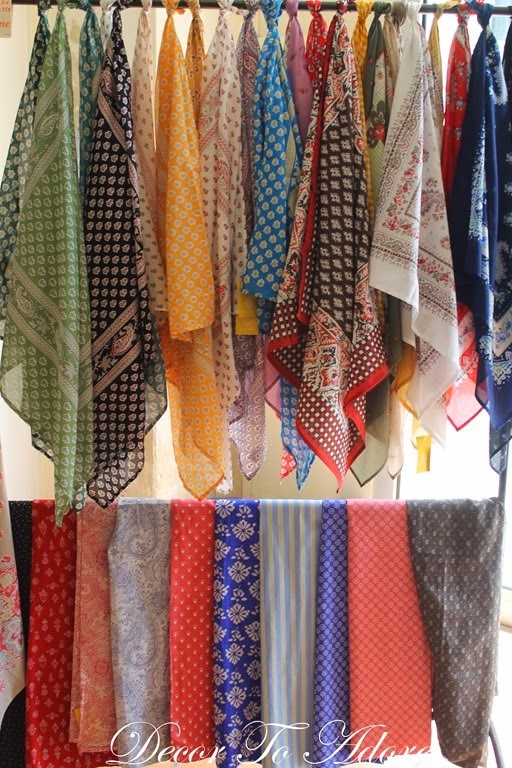

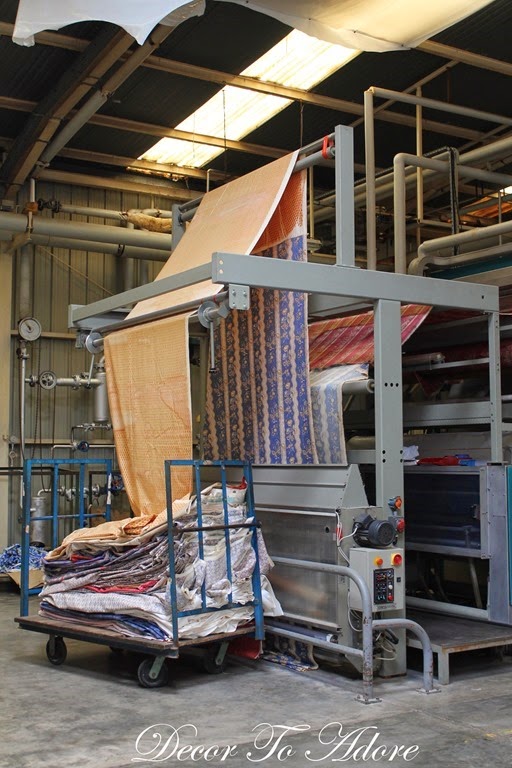

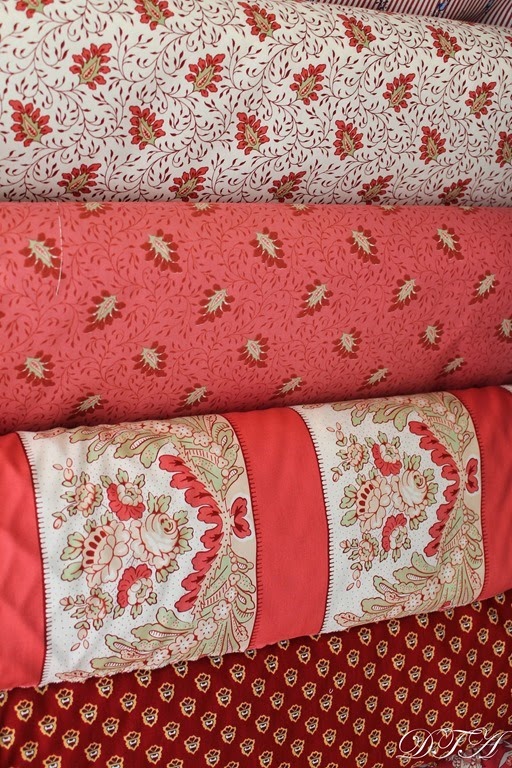

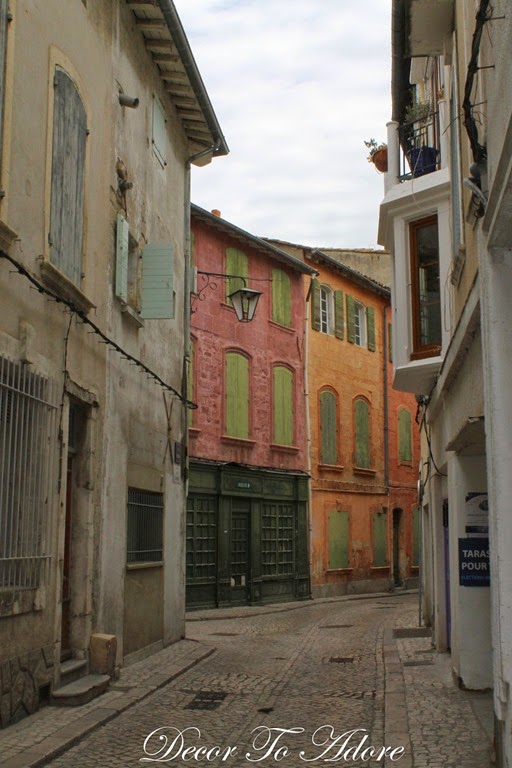
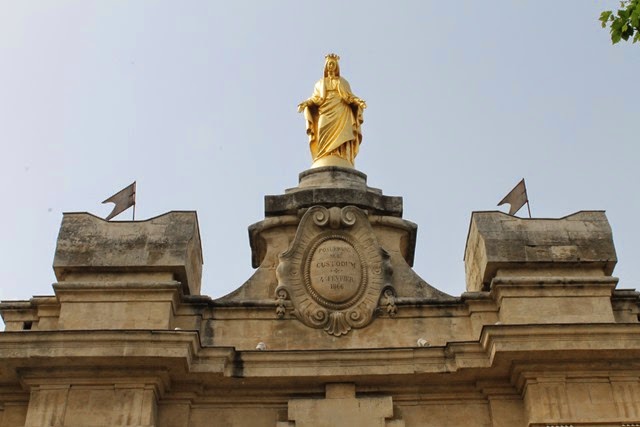
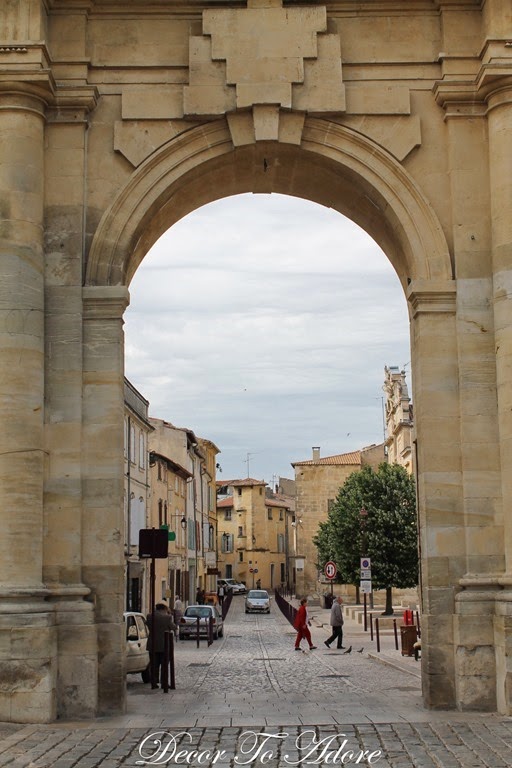
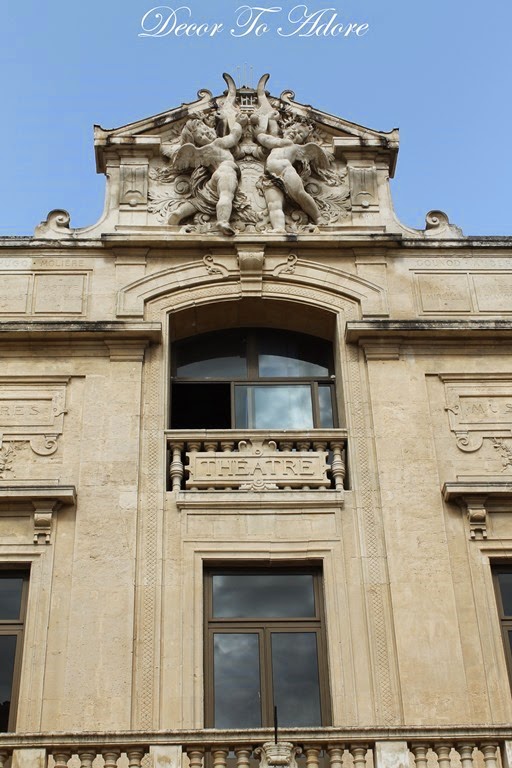
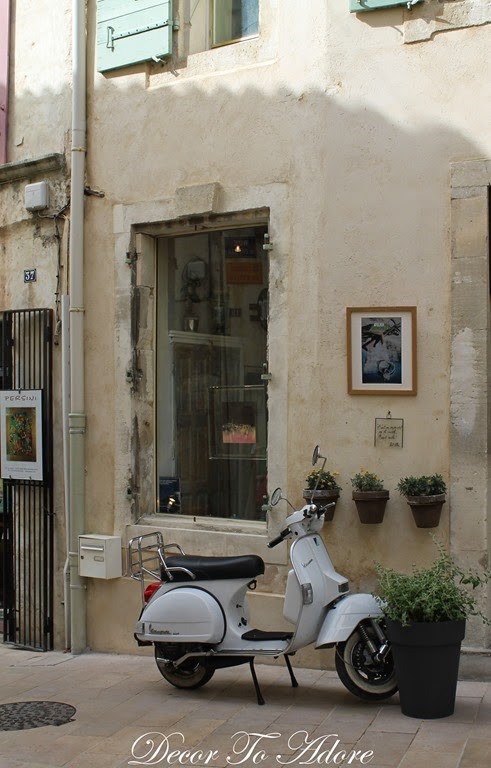
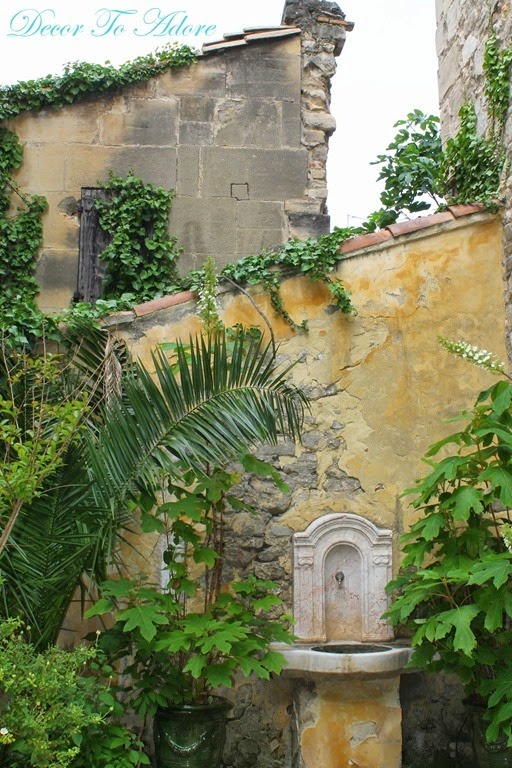
Lucky you to go back and to see those beautiful fabrics. I would love to see those in person. Great history shared that I did not know.
This was a great post. We used to have a Pierre Deux store in our city. My sister and I used to love just to window-shop and all the beautiful French material.
Madonna
MakeMineLemon
Another lovely post, Laura! Such vibrant colors , and interesting history. You seem the perfect ” travel to France” companion!
Wow how wonderful that you got to see all those yummy fabric, and the history of it all…..is awesome 😉
Love the gorgeous pic's…..
Smiles~
Mari
Followed your link over from My French Country Home and so happy that I did! I absolutely love these fabrics, but the pink fabrics really caught my eye. Thanks for sharing the tour with us!
just saw your comment on my blog about moving and came to read you are moving to Ft. Worth! We lived there when Elisabeth was a baby and we loved it. You will LOVE it!!!!!!!!! YOu should live in Ft. Worth, why not? They have great schools too. It's such a wonderful town. Good luck on your move. btw – i LOVED that B&B in France. Soooo charming!!!!
Oh, I would definitely choose something in the yellows and/or apricot-orange-ish colors! Fabulous tour, and lucky you to have met Monsieur Boudin and gotten the opportunity to do that tour! I want you to be my guide on my first trip to France, Laura – seriously!
How could you ever choose a fabric? I want them all!
I love all of those fabrics! Such beautiful architecture.
Oh all of these fabrics are fabulous. I would have loved the tour. Great post again and such wonderful history.
Laura, how fortunate you were to get to visit these special places. I adore the French Indiennes fabrics and have used them in our home. I will no doubt bring more home when I visit France in September. We need new cushions on the sun porch. '-)
Thanks for sharing the history and images of the factory and museum.
So interesting and informative, Laura. Your trip was fabulous in so many ways. Great food, gorgeous scenery, charming towns and gardens and on and on. Enjoying your posts immensely.
Wow what beautiful fabrics! And what another delightful village you have taken us to! I am so enjoying the tour!!
Beautiful fabrics. I love bringing back linens and fabric from the places I visit. How wonderful to visit the factory.
Such incredibly beautiful fabrics! I would be excited to get out my sewing machine. 🙂 Love the photos and the history.
xo
Pat
I love love love toile fabric and that red and cream Toile de Jouy, takes my breath away.
I want my bedroom cover in toile fabric, i'm working on it